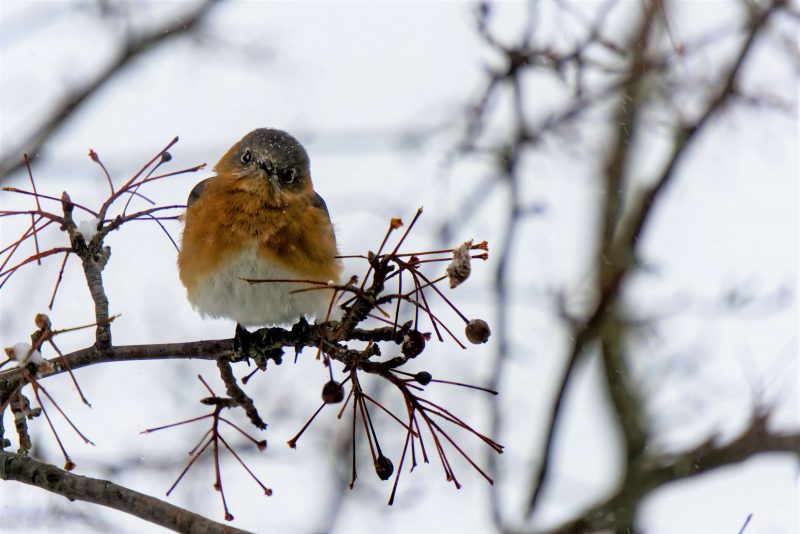No, there isn’t a typo in the title of this article. When monitoring nest boxes, the monitor needs to be cautious about when to check the box.
Mother Nature can be finicky, especially in early spring. The bluebirds are flitting about and claiming nest sites, but that doesn’t mean it’s an ideal time to begin laying eggs.
In New York, the Eastern Bluebird can start house-hunting in mid-March. We could have lovely, sunny 70° F temperatures or four feet of snow with a windchill of 9° F. The birds will do their birdy activities, so we must watch the weather and observe what’s happening around our nest boxes without harming the wildlife.
Once a pair of bluebirds begins nesting in the box, we should follow a strict monitoring protocol, including timing it just right.
Time of Day
Do not check in the early morning. Since most birds lay their eggs early in the morning, plan your check for late morning or early afternoon. Moms of most species rarely get a moment to themselves, and we don’t want to interrupt this time for the female bluebirds.
Bluebirds, as well as other adult birds, will leave the nesting area while we are around. Checking the nest box later in the day prevents exposing unprotected eggs or young to the chilly morning air.
Inclement Weather
Avoid checking nests during bad weather. If it is cold, damp, or rainy, postpone checking nests until another day. Even though we can throw on some extra layers and rain gear, checking nests during this time can be very stressful for birds.
After the Storm
Check each box thoroughly for damp areas inside if bad weather has occurred. Rain can sometimes seep in through gaps. If you find any, fill the gaps with silicone caulk from your local hardware store.
This is also a good time to check the positioning of your box. The entry hole to the nest box should face away from prevailing winds. If rain keeps hitting the front of the box or the pole leans towards the back, you can reposition it to prevent this in the future.
If you are unsure of the prevailing winds, check the USDA’s Wind Rose Data for your location and time of year.

Male Eastern Bluebird with Fledgling ©Cherie Layton
We can do a lot as good bluebird stewards, but we also need to remember to take a step back and let nature take its course. We can’t control the weather but can control whether we help or hinder our feathered friends.

